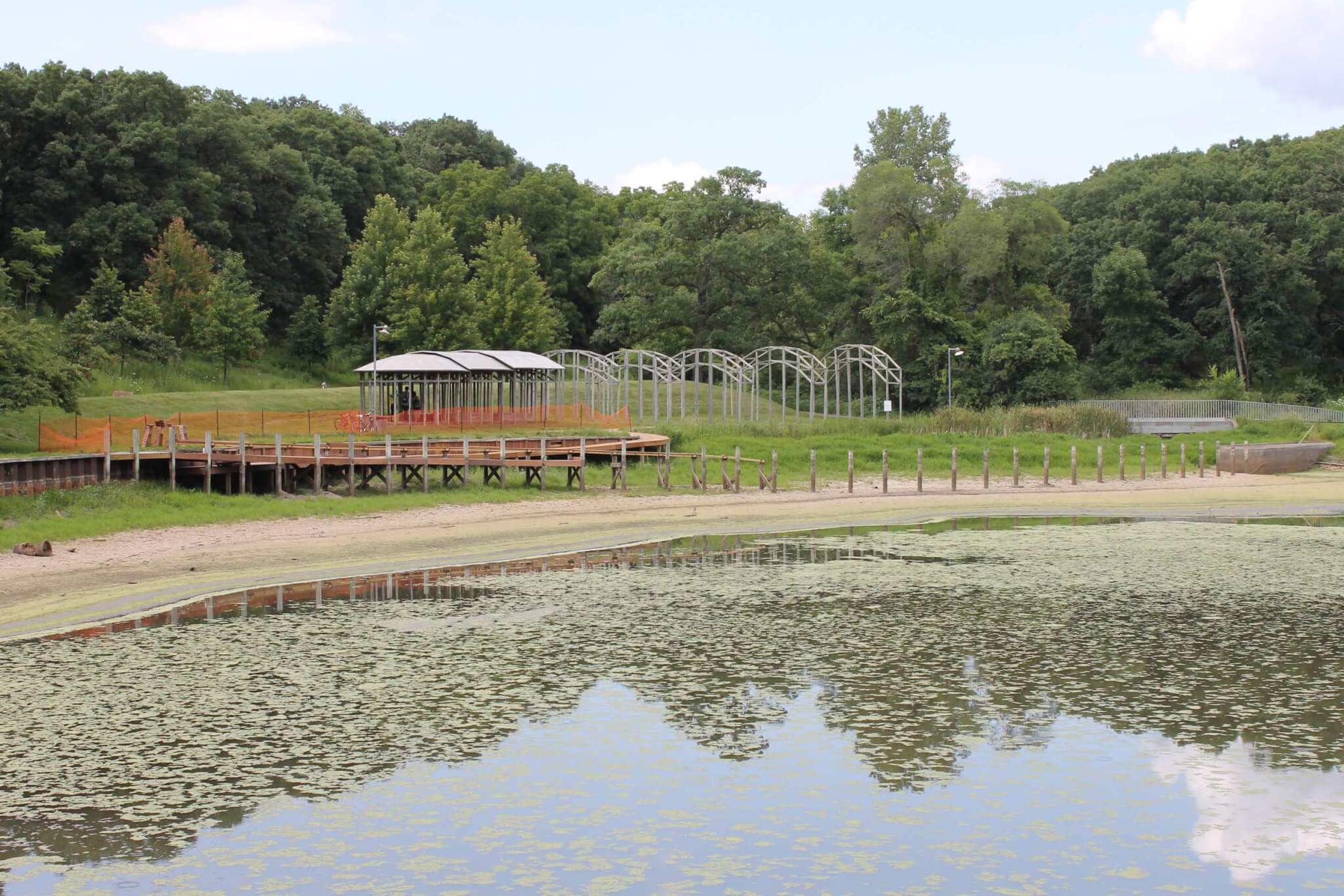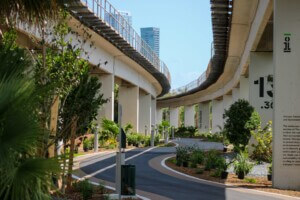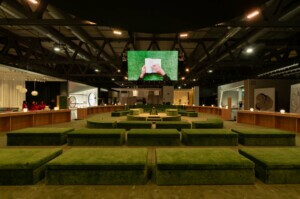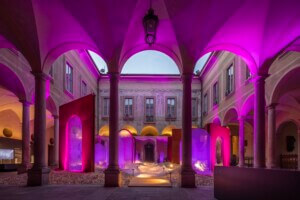At Des Moines Art Center (DMAC) a meandering wooden boardwalk and concrete walkways hug a 1.6-acre lagoon to form an installation that doubles as an art piece and point of recreation. Mary Miss’s Greenwood Pond: Double Site opened in 1996 and has since camouflaged itself in the natural surroundings of Greenwood Park. The land art installation is now slated to be torn down.
On December 1, 2023, according to The Cultural Landscape Foundation (TCLF), DMAC notified Miss of plans to decouple the art piece from Greenwood Park, a 147-acre public green space that abuts the art museum. This notification followed an earlier announcement from DMAC in October that stated the installation would be closed to the public for “a structural review of the site.” Fencing was subsequently installed around the site; several of its structures were taken apart; and the museum assembled a team of city officials, engineers, and contractors “to consider future plans.”

In a statement shared with TCLF, Miss said she is “shocked that this [demolition] decision has been reached so quickly on the future of Greenwood Pond: Double Site.” The site-specific work is the “the first urban wetland project” in the U.S.
The work’s relationship with nature manifests through its materiality—a compilation of wood, metal, and concrete—and its placement within the site. The structures, comprising the installation—among these a covered pavilion, a sunken seating area, wood trellis, bridge, and a tiered terrace—allude to Miss’s intention to create a “green city.” Beyond its aesthetic value and its engagement with nature, the work is a living ecosystem and promotes resiliency.
“I was taken with the idea of being able to give people in the city a sense of what it actually means to create a ‘green city’, a place where runoff water becomes a resource, not just a nuance,” Miss said in a description. “The 6.5-acre urban prairie and wetland ecosystem not only engages the public with the environment, it provides wildlife habitat and stormwater mitigation.”

TCLF listed the work in its 2014 Landslide report, along with 11 other at-risk land art pieces. A fundraising program raised $800,000 for the restoration and continued upkeep of the piece. Now the TCLF has again relegated the piece to “at-risk” status and is calling on the public to reach out to DMAC to consider ways the installation can be preserved.

“The DMAC’s plan to tear down this widely hailed work is not only unreasonable, it undermines the Art Center’s fundamental role as a responsible steward of our shared cultural legacy,” said TCLF’s president and CEO Charles A. Birnbaum in a statement.











